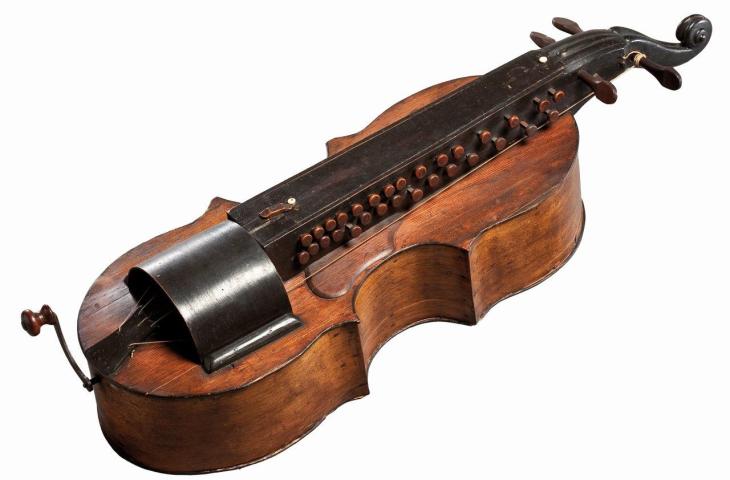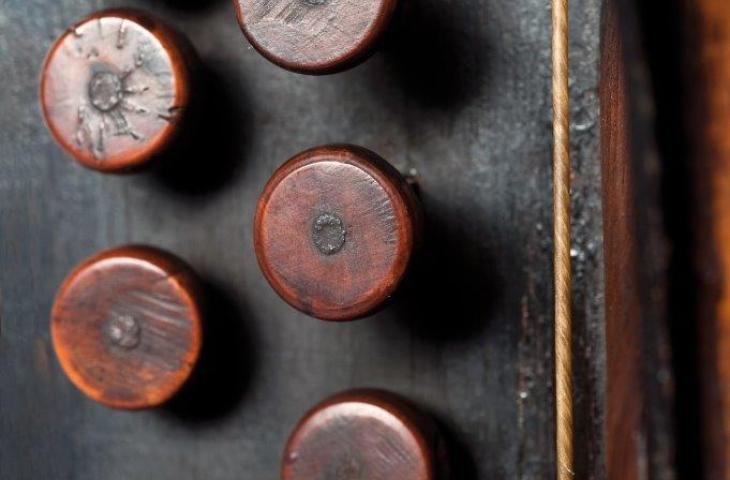Hurdy-gurdy

Hurdy-gurdy, Flanders, probably 18th century, inv. 2904
Hurdy-gurdy

Hurdy-gurdy, Flanders, probably 18th century, inv. 2904
In earlier times, the hurdy-gurdy played dance music and accompanied itinerant, often blind, begging singers. It consists of a sound-box fitted with a wheel, strings and a series of keys. The wheel is rotated by a crank and strokes the strings like a bow. The keys on the neck are connected to upright tangents that can shorten the vibrating section of the strings to vary the tone.
This hurdy-gurdy is notable for several features. The sound-box has the form of a cello, rare among western European hurdy-gurdies, which are generally oval, triangular or guitar-shaped. The neck is exceptionally long and fitted with an unusually large number of keys. Lastly, on both sides of the wheel the sound-board bears traces of earlier sound-holes, suggesting that the instrument was built with wood from an older instrument.